Datasheet
Year, pagecount:2006, 4 page(s)
Language:English
Downloads:4
Uploaded:April 23, 2020
Size:527 KB
Institution:
-
Comments:
University Belfast
Attachment:-
Download in PDF:Please log in!
Comments
No comments yet. You can be the first!Most popular documents in this category
Content extract
Source: http://www.doksinet Exemplars as Recipes for Language Teaching Steve Walsh, Cathriona Connor, Queen’s University Belfast Summary – Introduction – Rationale – Merits – PracticeTheory – Routines – Ownership – Benefits of CRAMLAP exemplars – Student-Generated Materials (SGMs) – Trialling Two Exemplars – Student Feedback – Motivation – Topicalization – Learner Training – Awareness of Teaching Goals – Role of Affect – Conclusion – References Summary The exemplars that were developed as part of the CRAMLAP project provide a set of recipes for language teaching. Those recipes are based on sound principles of teaching and learning They are designed for teachers to adapt to suit their local contexts. They can be used with a variety of learners and contexts – beginners, intermediate, advanced learners at third-level, second-level; in small groups or one-to-one tuition – and they cover the four language skills (reading, writing, listening, and
speaking), as well as the systems (grammar, lexis and phonology). As part of a short action research project, two of the exemplars in the set (14: Newspapers for Beginners; and 26: Musical Cloze) were adapted to suit a group of international students of English, studying at third-level in Ireland. Using these two exemplars once a week over a semester enabled students to develop autonomy and effective strategies for language learning. Feedback from the students, in the form of anonymous questionnaires, showed that the students found the activities useful for language learning, motivating, and enjoyable. Introduction In this project, exemplars are used to provide teachers with suggested activities for language teaching. An exemplar is a brief (1-page), step-by-step description of a teaching activity, and can be adapted for use in a variety of contexts. Because of their format, exemplars are also referred to as recipes. Recipes feature widely in resource books for teachers, as they are an
effective way to share activities and techniques, and are based on sound principles of teaching and learning. For an example of such a resource book (and the one which inspired these exemplars), see The Recipe Book by Seth Lindstromberg (published by Pilgrims Longman, 1990). In the CRAMLAP project, a set of thirty exemplars was developed as a resource for teachers of regional and minority languages abroad. They can be adapted to suit any language and can be used with a variety of materials. They incorporate activities for practice in the four language skills – reading, writing speaking and listening – as well as focus on form (FonF) activities. View all CRAMLAP exemplars. Rationale The exemplars in this project are based on principles of language teaching and learning. They facilitate learning through problem-solving; they aim to maximise opportunities for students to learn and improve their language skills by interacting with others; and because many of them can be used with
student-generated materials, they are designed to be motivating, relevant to the students’ needs, and at a level appropriate for the student’s developing language. back to top Merits Recipes: • can (and should) be adapted, to take into account such factors as the language you are teaching; your teaching goals; the level of the students in the class; their interests, needs, etc. • do not normally required prescribed materials, i.e, a particular coursebook They are designed for use with whatever materials the teacher has available – or better still, materials created by the students. • can bring about change in teaching and learning without any (re)training. • provide a set of teaching routines • lend themselves to reflective practice Source: http://www.doksinet • influence approaches to teaching with a ‘bottom-up’ practicetheory approach. back to top Practice Theory Education programmes typically begin with theory, which students (e.g, trainee
teachers) are encouraged to put into practice. However, it may not be obvious how theory can be put into practice. This ‘top-down’ theorypractice approach can lead to a ‘poverty of technique’ In contrast, these recipes provide immediate techniques, which are based on established principles and theories. By using the techniques in practice, teachers may (intuitively or consciously) develop an understanding of the principles on which the techniques are based. This ‘bottom-up’ approach attempts to address the issue of poverty of technique. back to top Routines The techniques in these recipes provide a set of routines. Routines are associated with expertise in teaching; they makes lesson planning more efficient; they free up the cognitive demands on teachers; and enable them to focus on other aspects of teaching. (Tsui 2003) The CRAMLAP recipes give teachers a set of routines, based on sound principles, which they can adapt to suit their own contexts. back to top
Ownership Each recipe is a generic model, which teachers can adapt to their local contexts. Adaptation by teachers is part of the process of innovative teaching and leads to ownership, which in turn supports principled teaching. back to top Benefits of CRAMLAP exemplars The CRAMLAP recipes • provide practice in all four skills and the systems (grammar, lexis, and phonology). • include activities for all levels. • are student-centred. • facilitate learning through interaction. • facilitate the use of student-generated materials. back to top Student-Generated Materials (SGMs) In the language classroom, texts for language learning need not always be chosen by the teacher. Students too can create learning materials, for example by bringing to class an interesting news story, a text that s/he has written, a song, some realia, etc. With SGMs, students: • choose language and topics of interest to them. • focus attention on language they are ready to acquire/consolidate.
• become more independent as learners. • develop language-learning strategies. • become motivated. back to top Trialling Two Exemplars As part of a short action research project, two recipes (14: Newspapers for Beginners; and 26: Musical Cloze) were put to practice with a group of tertiary-level English language learners. All the exemplars are intended to be adapted to suit the local context and this was also the case with these two trialled exemplars. The first (Newspapers for Beginners) was adapted to become News Stories and was designed to encourage students to become more independent learners and to seek out opportunities for language learning outside the classroom. Students were invited to bring to class once a week a newspaper story in the target language. Each student described his/her Source: http://www.doksinet chosen news story to the class in a short presentation, and the teacher used this presentation as source material to focus afterwards on language that
featured in the text. The second exemplar (Musical Cloze) was adapted to become Songs and, similarly, it was intended to foster learner autonomy. Each week, one student brought to class a song (music and lyrics) in the target language. The teacher took these away and used them to create a listening exercise for a subsequent lesson. That lesson would incorporate listening and, normally, some ‘language focus’ work, in the form of vocabulary or grammar that appeared in the song. These two recipes were used once a week over a semester with a group of intermediatelevel, tertiary, international students of English. Below is some student feedback back to top Student Feedback Students gave feedback in the form of anonymous evaluation questionnaires. Their comments relate to: • Motivation • Topicalisation • Learner Training • Awareness of pedagogic goals • Role of affect back to top Motivation Students found lessons based on these recipes to be motivating: “You will be
more interested in it, so you can study it easily and remember it a long time.” “You will be more interested in studying.” “I think this is a good method to improve our enthusiasm.” Would you like us to continue using SGMs? “Yes, because this lesson makes us want to study English.” “Yes, I agree. It is motivating” “Yes, I think that it is a good way to improve my English and we can learn from each other [in the News Stories lesson].” back to top Topicalisation Topicalisation refers to students learning from topics that are rich in personal meaning for them. The principle behind this is that what is rich in meaning for students – what is topicalised (Slimani, 1989) – is likely to be learned. “the advantage [of the News Stories and Songs activities] is that students have a chance to choose what they interested.” back to top Learner Training SGMs can train students in effective language learning strategies. For example, it trains learners to find
opportunities for language learning outside the classroom. “[Reading news stories] is a good habit we can hold after class.” “[Using songs] I can learn new ways of expressing idea and also I can learn some new grammar”. “The advantages is that we can learn a lot about learning English with music and we can adjust our study.” back to top Awareness of Teaching Goals Although the pedagogic goals of the News Stories and Songs lessons were not made explicit to students, feedback revealed that students had gained an awareness of the teaching goals. “I think it’s a good way to improve our reading skills.” Source: http://www.doksinet “There are a lot of advantages. First, we can learn some words and phrases Second we can improve our pronunciation.” “It can help us to learn the pronunciation.” “It’s a better way to practise listening skills.” back to top Role of Affect In this context, affect refers to students’ attitudes and feelings about and while
learning. For example, it refers to affective factors such as anxiety, motivation, feeling intimidated by more competent classmates, etc. “ this lesson is relaxing, so I can learn many new words and phrases.” “Song is a good way to relax. We can learn and enjoyable” “Yes, [I would like us to continue using SGMs] because this lesson is enjoyable and helping me studying English.” back to top Conclusion By trialling two exemplars over a semester, it was possible for both teacher and learners to develop improved techniques. It was necessary and desirable to adapt the existing exemplars to suit the local context. Feedback from students showed that students found the topicalized, student-generated materials in the exemplars motivating, effective for improving their language skills, and enjoyable. References Lindstromberg, S. (1990) The Recipe Book Pilgrims Longman Slimani, A. (1989) The Role of Topicalisation in Classroom Language Learning System, 17, pp223-234. Tsui, A.
(2003) Understanding Expertise in Teaching: Case Studies of Second Language Teachers. Cambridge: Cambridge University Press
speaking), as well as the systems (grammar, lexis and phonology). As part of a short action research project, two of the exemplars in the set (14: Newspapers for Beginners; and 26: Musical Cloze) were adapted to suit a group of international students of English, studying at third-level in Ireland. Using these two exemplars once a week over a semester enabled students to develop autonomy and effective strategies for language learning. Feedback from the students, in the form of anonymous questionnaires, showed that the students found the activities useful for language learning, motivating, and enjoyable. Introduction In this project, exemplars are used to provide teachers with suggested activities for language teaching. An exemplar is a brief (1-page), step-by-step description of a teaching activity, and can be adapted for use in a variety of contexts. Because of their format, exemplars are also referred to as recipes. Recipes feature widely in resource books for teachers, as they are an
effective way to share activities and techniques, and are based on sound principles of teaching and learning. For an example of such a resource book (and the one which inspired these exemplars), see The Recipe Book by Seth Lindstromberg (published by Pilgrims Longman, 1990). In the CRAMLAP project, a set of thirty exemplars was developed as a resource for teachers of regional and minority languages abroad. They can be adapted to suit any language and can be used with a variety of materials. They incorporate activities for practice in the four language skills – reading, writing speaking and listening – as well as focus on form (FonF) activities. View all CRAMLAP exemplars. Rationale The exemplars in this project are based on principles of language teaching and learning. They facilitate learning through problem-solving; they aim to maximise opportunities for students to learn and improve their language skills by interacting with others; and because many of them can be used with
student-generated materials, they are designed to be motivating, relevant to the students’ needs, and at a level appropriate for the student’s developing language. back to top Merits Recipes: • can (and should) be adapted, to take into account such factors as the language you are teaching; your teaching goals; the level of the students in the class; their interests, needs, etc. • do not normally required prescribed materials, i.e, a particular coursebook They are designed for use with whatever materials the teacher has available – or better still, materials created by the students. • can bring about change in teaching and learning without any (re)training. • provide a set of teaching routines • lend themselves to reflective practice Source: http://www.doksinet • influence approaches to teaching with a ‘bottom-up’ practicetheory approach. back to top Practice Theory Education programmes typically begin with theory, which students (e.g, trainee
teachers) are encouraged to put into practice. However, it may not be obvious how theory can be put into practice. This ‘top-down’ theorypractice approach can lead to a ‘poverty of technique’ In contrast, these recipes provide immediate techniques, which are based on established principles and theories. By using the techniques in practice, teachers may (intuitively or consciously) develop an understanding of the principles on which the techniques are based. This ‘bottom-up’ approach attempts to address the issue of poverty of technique. back to top Routines The techniques in these recipes provide a set of routines. Routines are associated with expertise in teaching; they makes lesson planning more efficient; they free up the cognitive demands on teachers; and enable them to focus on other aspects of teaching. (Tsui 2003) The CRAMLAP recipes give teachers a set of routines, based on sound principles, which they can adapt to suit their own contexts. back to top
Ownership Each recipe is a generic model, which teachers can adapt to their local contexts. Adaptation by teachers is part of the process of innovative teaching and leads to ownership, which in turn supports principled teaching. back to top Benefits of CRAMLAP exemplars The CRAMLAP recipes • provide practice in all four skills and the systems (grammar, lexis, and phonology). • include activities for all levels. • are student-centred. • facilitate learning through interaction. • facilitate the use of student-generated materials. back to top Student-Generated Materials (SGMs) In the language classroom, texts for language learning need not always be chosen by the teacher. Students too can create learning materials, for example by bringing to class an interesting news story, a text that s/he has written, a song, some realia, etc. With SGMs, students: • choose language and topics of interest to them. • focus attention on language they are ready to acquire/consolidate.
• become more independent as learners. • develop language-learning strategies. • become motivated. back to top Trialling Two Exemplars As part of a short action research project, two recipes (14: Newspapers for Beginners; and 26: Musical Cloze) were put to practice with a group of tertiary-level English language learners. All the exemplars are intended to be adapted to suit the local context and this was also the case with these two trialled exemplars. The first (Newspapers for Beginners) was adapted to become News Stories and was designed to encourage students to become more independent learners and to seek out opportunities for language learning outside the classroom. Students were invited to bring to class once a week a newspaper story in the target language. Each student described his/her Source: http://www.doksinet chosen news story to the class in a short presentation, and the teacher used this presentation as source material to focus afterwards on language that
featured in the text. The second exemplar (Musical Cloze) was adapted to become Songs and, similarly, it was intended to foster learner autonomy. Each week, one student brought to class a song (music and lyrics) in the target language. The teacher took these away and used them to create a listening exercise for a subsequent lesson. That lesson would incorporate listening and, normally, some ‘language focus’ work, in the form of vocabulary or grammar that appeared in the song. These two recipes were used once a week over a semester with a group of intermediatelevel, tertiary, international students of English. Below is some student feedback back to top Student Feedback Students gave feedback in the form of anonymous evaluation questionnaires. Their comments relate to: • Motivation • Topicalisation • Learner Training • Awareness of pedagogic goals • Role of affect back to top Motivation Students found lessons based on these recipes to be motivating: “You will be
more interested in it, so you can study it easily and remember it a long time.” “You will be more interested in studying.” “I think this is a good method to improve our enthusiasm.” Would you like us to continue using SGMs? “Yes, because this lesson makes us want to study English.” “Yes, I agree. It is motivating” “Yes, I think that it is a good way to improve my English and we can learn from each other [in the News Stories lesson].” back to top Topicalisation Topicalisation refers to students learning from topics that are rich in personal meaning for them. The principle behind this is that what is rich in meaning for students – what is topicalised (Slimani, 1989) – is likely to be learned. “the advantage [of the News Stories and Songs activities] is that students have a chance to choose what they interested.” back to top Learner Training SGMs can train students in effective language learning strategies. For example, it trains learners to find
opportunities for language learning outside the classroom. “[Reading news stories] is a good habit we can hold after class.” “[Using songs] I can learn new ways of expressing idea and also I can learn some new grammar”. “The advantages is that we can learn a lot about learning English with music and we can adjust our study.” back to top Awareness of Teaching Goals Although the pedagogic goals of the News Stories and Songs lessons were not made explicit to students, feedback revealed that students had gained an awareness of the teaching goals. “I think it’s a good way to improve our reading skills.” Source: http://www.doksinet “There are a lot of advantages. First, we can learn some words and phrases Second we can improve our pronunciation.” “It can help us to learn the pronunciation.” “It’s a better way to practise listening skills.” back to top Role of Affect In this context, affect refers to students’ attitudes and feelings about and while
learning. For example, it refers to affective factors such as anxiety, motivation, feeling intimidated by more competent classmates, etc. “ this lesson is relaxing, so I can learn many new words and phrases.” “Song is a good way to relax. We can learn and enjoyable” “Yes, [I would like us to continue using SGMs] because this lesson is enjoyable and helping me studying English.” back to top Conclusion By trialling two exemplars over a semester, it was possible for both teacher and learners to develop improved techniques. It was necessary and desirable to adapt the existing exemplars to suit the local context. Feedback from students showed that students found the topicalized, student-generated materials in the exemplars motivating, effective for improving their language skills, and enjoyable. References Lindstromberg, S. (1990) The Recipe Book Pilgrims Longman Slimani, A. (1989) The Role of Topicalisation in Classroom Language Learning System, 17, pp223-234. Tsui, A.
(2003) Understanding Expertise in Teaching: Case Studies of Second Language Teachers. Cambridge: Cambridge University Press
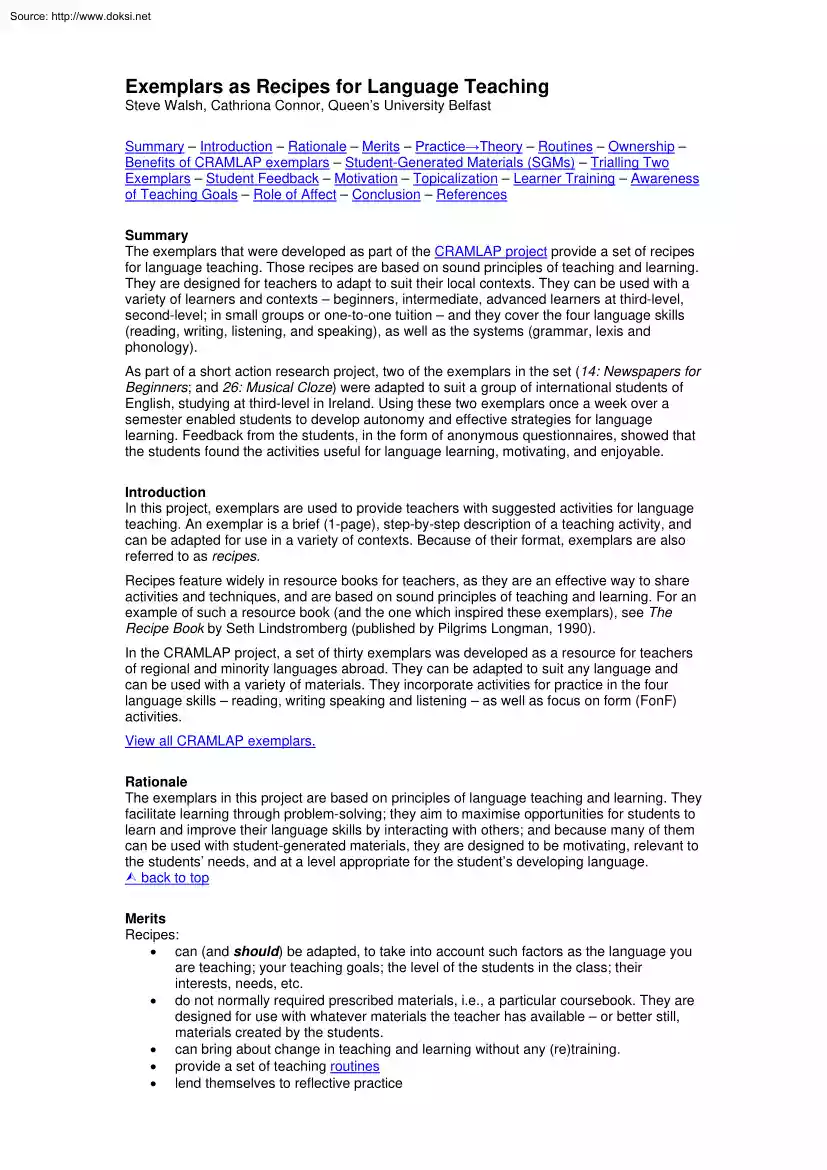
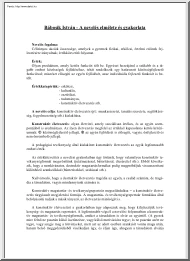
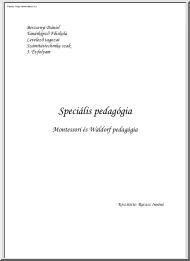
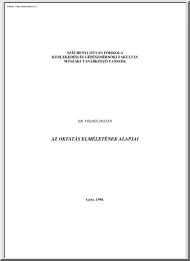
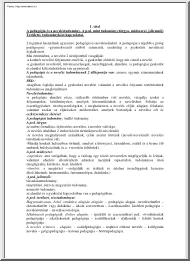
 When reading, most of us just let a story wash over us, getting lost in the world of the book rather than paying attention to the individual elements of the plot or writing. However, in English class, our teachers ask us to look at the mechanics of the writing.
When reading, most of us just let a story wash over us, getting lost in the world of the book rather than paying attention to the individual elements of the plot or writing. However, in English class, our teachers ask us to look at the mechanics of the writing.